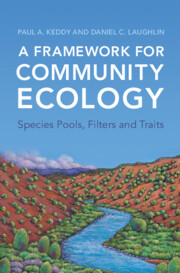3 results
1 - A General Framework for Community Ecology
-
- Book:
- A Framework for Community Ecology
- Published online:
- 18 November 2021
- Print publication:
- 09 December 2021, pp 1-40
-
- Chapter
- Export citation
2 - Filters
-
- Book:
- A Framework for Community Ecology
- Published online:
- 18 November 2021
- Print publication:
- 09 December 2021, pp 41-75
-
- Chapter
- Export citation

A Framework for Community Ecology
- Species Pools, Filters and Traits
-
- Published online:
- 18 November 2021
- Print publication:
- 09 December 2021

